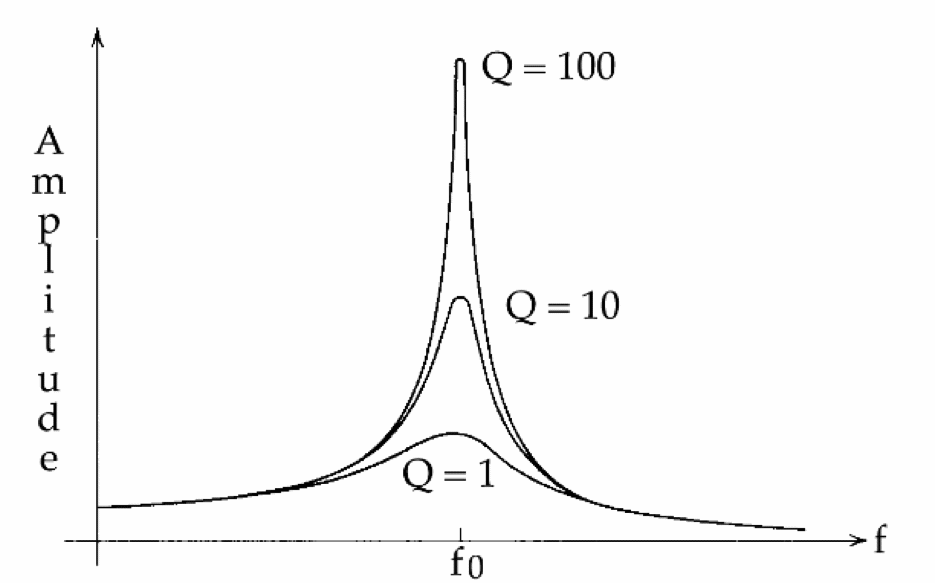Musical Sound
Class 3
Resonance and Normal Modes
NOTE Homework due Friday
Class on Friday in G025
Oscillations
Need
Restoring force, something springy
Moving mass
Sinusoidal motion
Period: time for one complete motion
Frequency=1/Period
Often talk about Angular Frequency ω=2πf
Size of motion called Amplitude
Called Simple Harmonic Motion.
Damping
Friction type force
Force opposes motion causing it
eg. sliding friction, air drag, water drag
Removes energy from system so amplitude falls over time
Describe by Q, Quality factor
Q= Energy Stored
Energy Lost in 1 Cycle
For all but lowest Q, ESTIMATE Q=# of cycles before stops
Driven Oscillation
Drive by external periodic force
Drive frequency f (angular ω)
Natural frequency called f0 (angular ω0)
For mass on spring ω0 = √(k/m)
Resonance
If drive frequency far from natural very little happens
If drive frequency near natural get large response
Often call frequency of max. response Resonant Frequency
Resonance Curve

Normal
Modes
Normal Mode
A motion in which all parts of the system undergo simple harmonic motion at the same frequency
System with n-masses has n modes for each direction of motion.
Continuous system (eg. string, bar, sheet) will have infinite number of modes. Only the lower ones usually be of interest.
Normally each mode has its own unique resonant frequency (rarely some modes share)
Superposition
Systems with several modes can oscillate in a mixture.
Resulting motion is simple sum of the motions
Called principle of superpostion.
Every possible motion of the system is some mixture of the normal modes.
Superposition Rules
• Every motion of the system can be written as a sum of the normal modes.
• If we analyze the sound spectrum then we shall only find frequencies corresponding to the normal modes.
• The amount of each normal mode depends on the way that the motion was started.
– Modes whose shape is similar to the starting shape will be strongly excited, those with different shapes will be weakly excited.
– When the initial shape is produced by striking or plucking the system then those modes with anti-nodes closest to the striking point will be strongest and those with nodes closest to the striking point will be weakest.
2-D Systems
• System can resonate at any of its normal modes.
• Many resonances at many frequencies
– Lower frequency resonances involve large scale movements of the surface as a whole or only a few sections.
• The displacement it typically large but the velocity low.
• Low modes are widely separated in frequency; factors of 1.5 to 3 are common between the fundamental and the first harmonic.
– Higher frequencies involve smaller scale movements but usually spread over the whole surface.
• The displacements typically grow smaller as the frequency increases.
• The modes tend to get closer and closer together in frequency as the mode number increases.